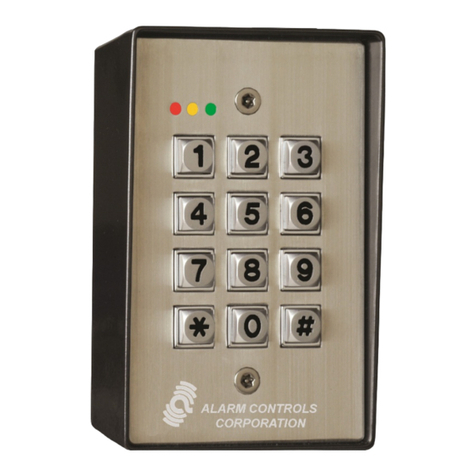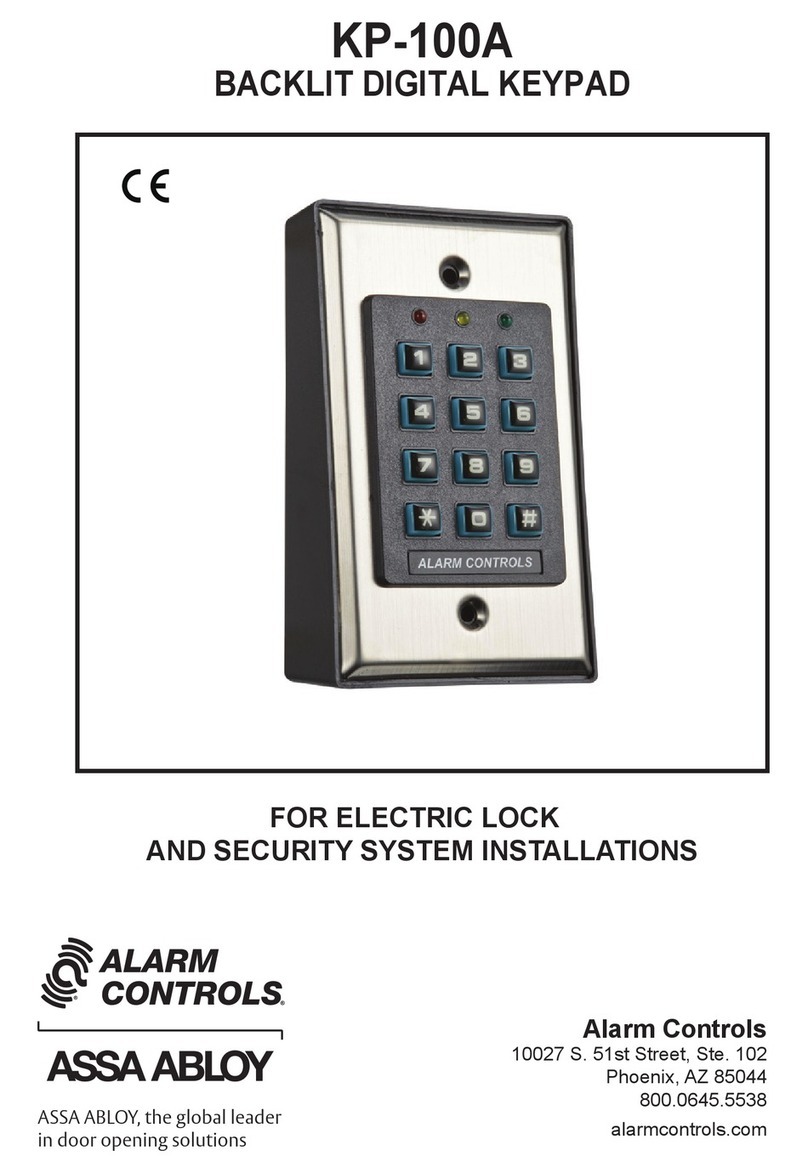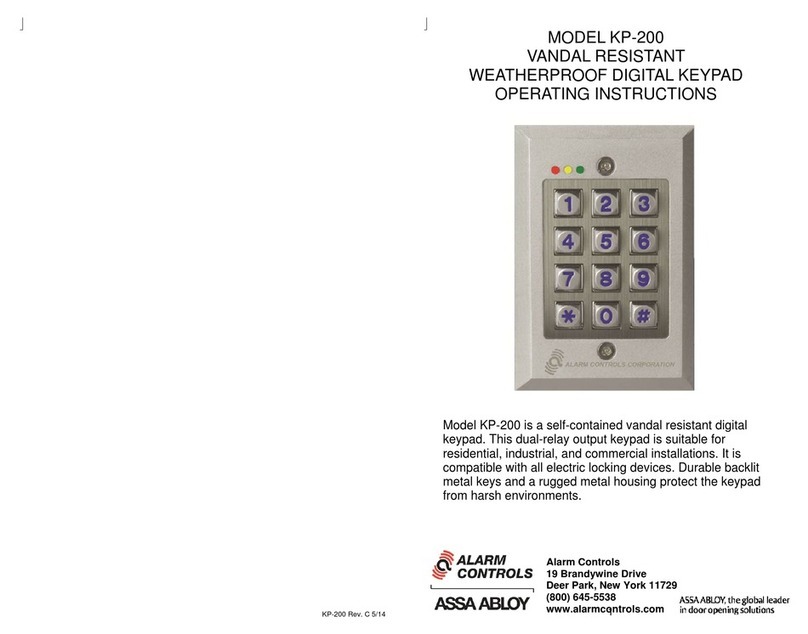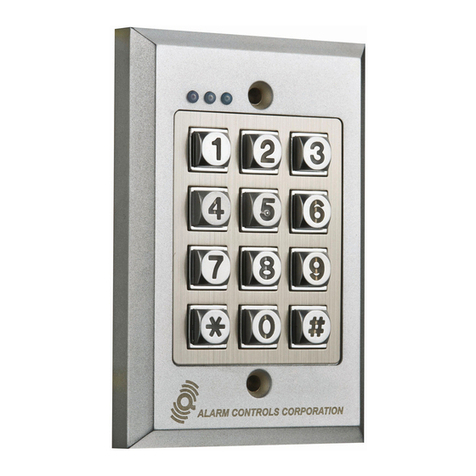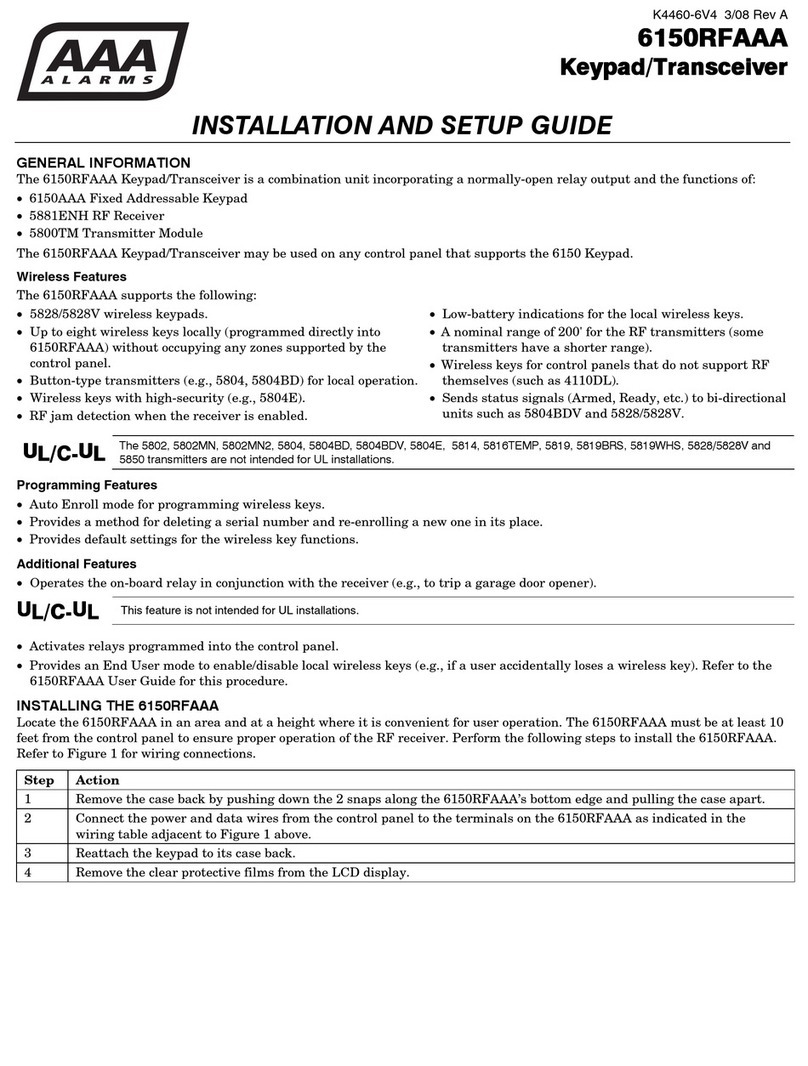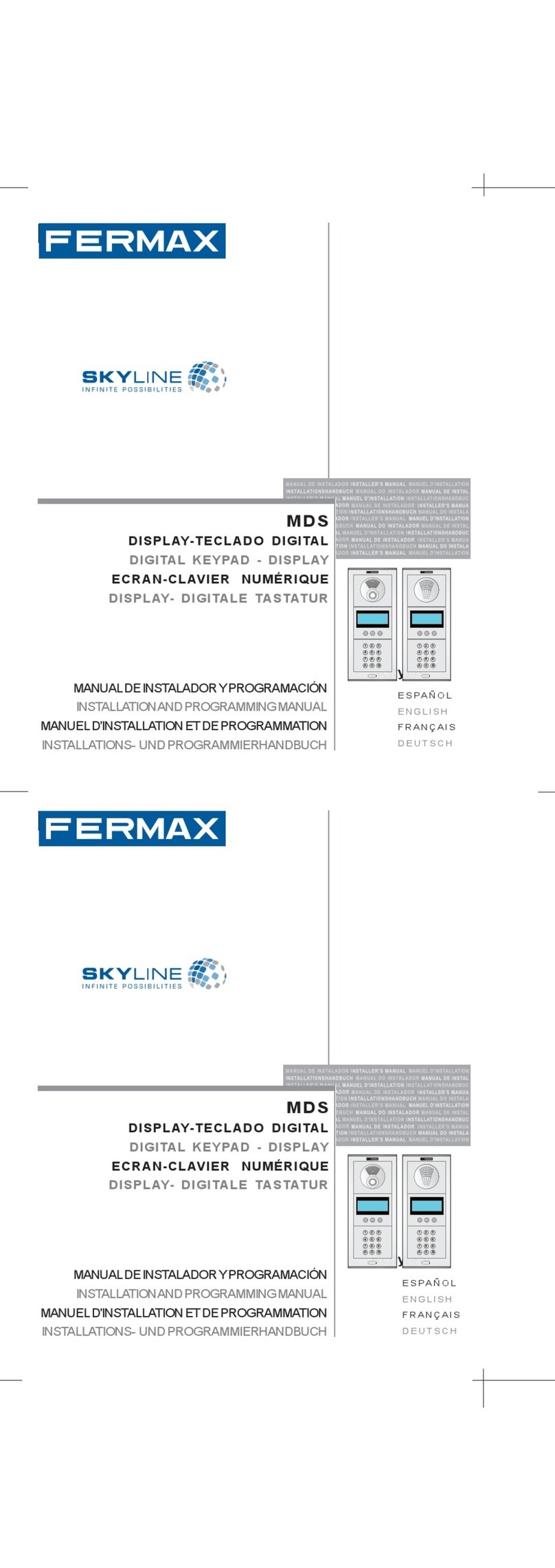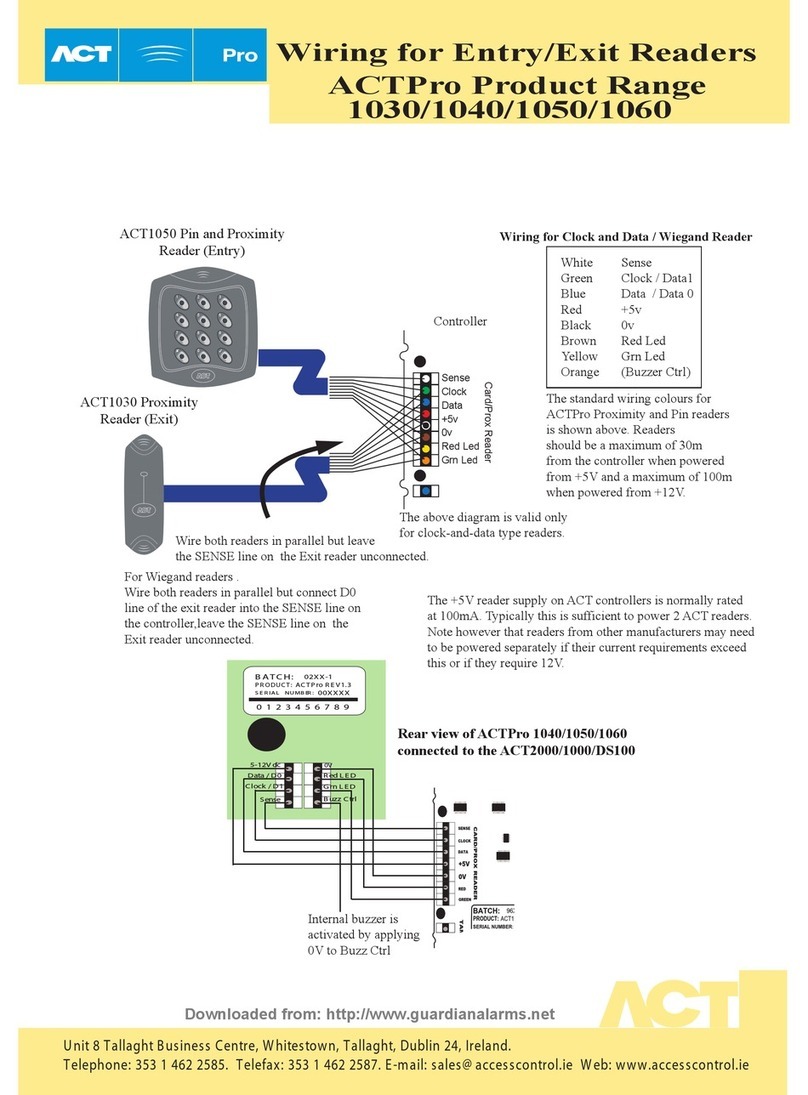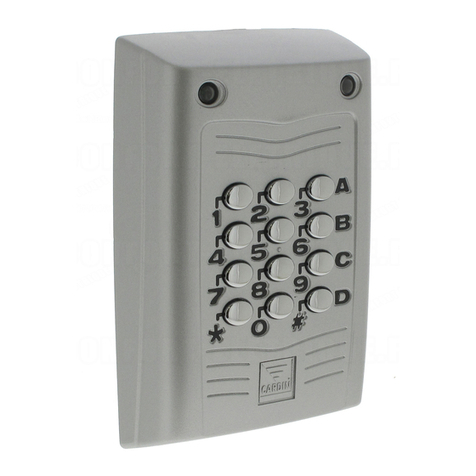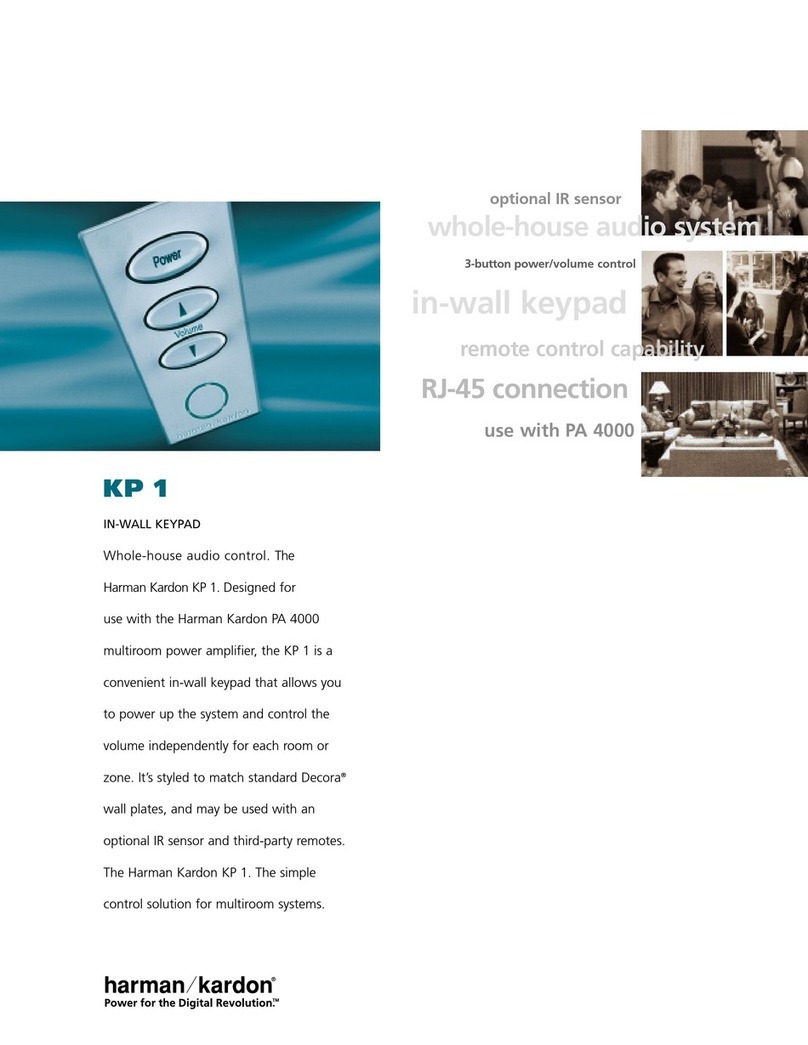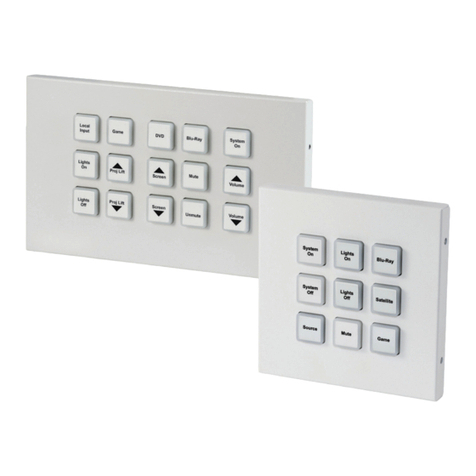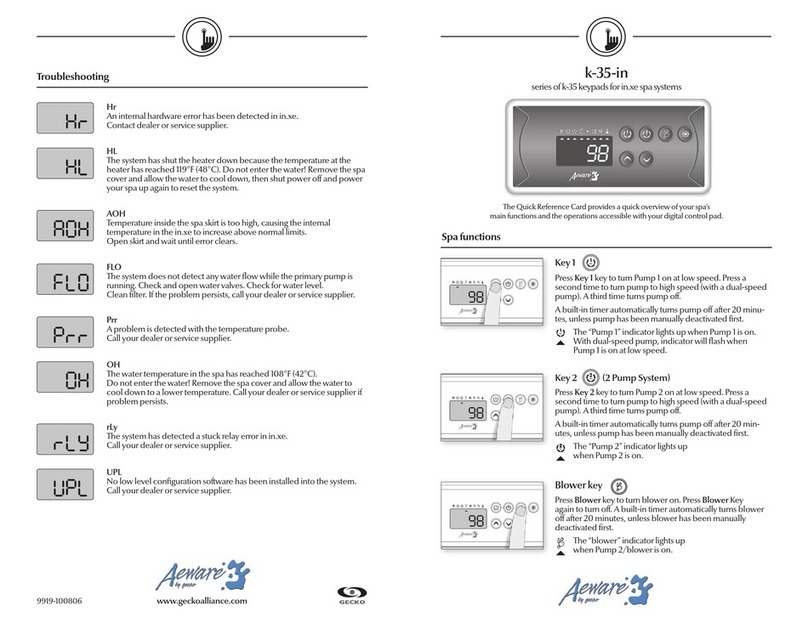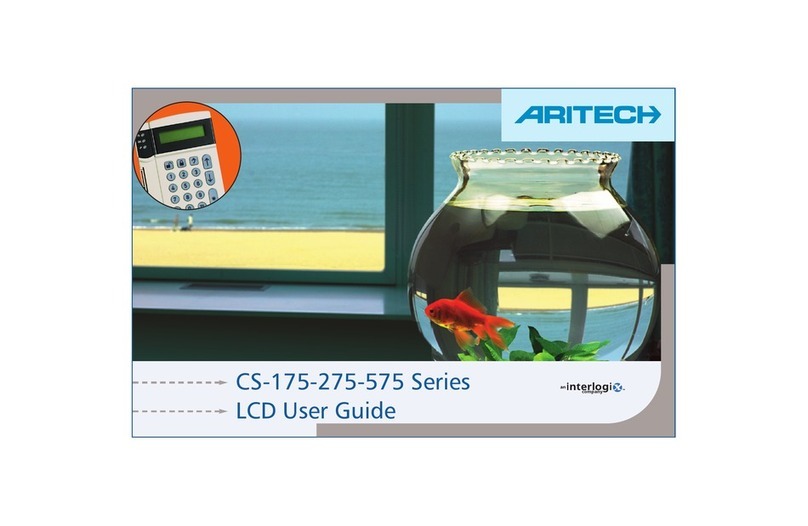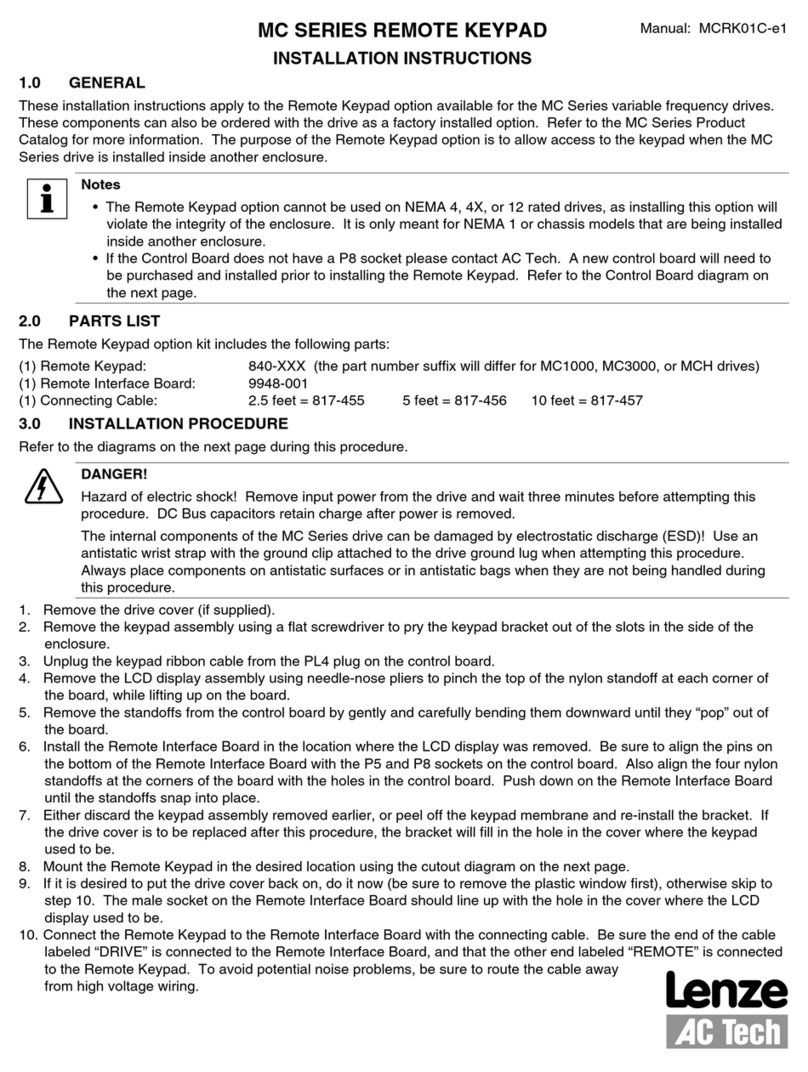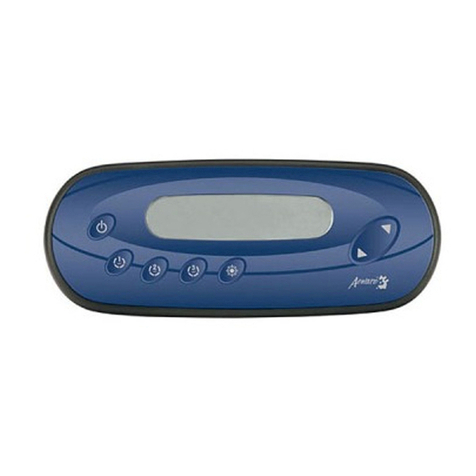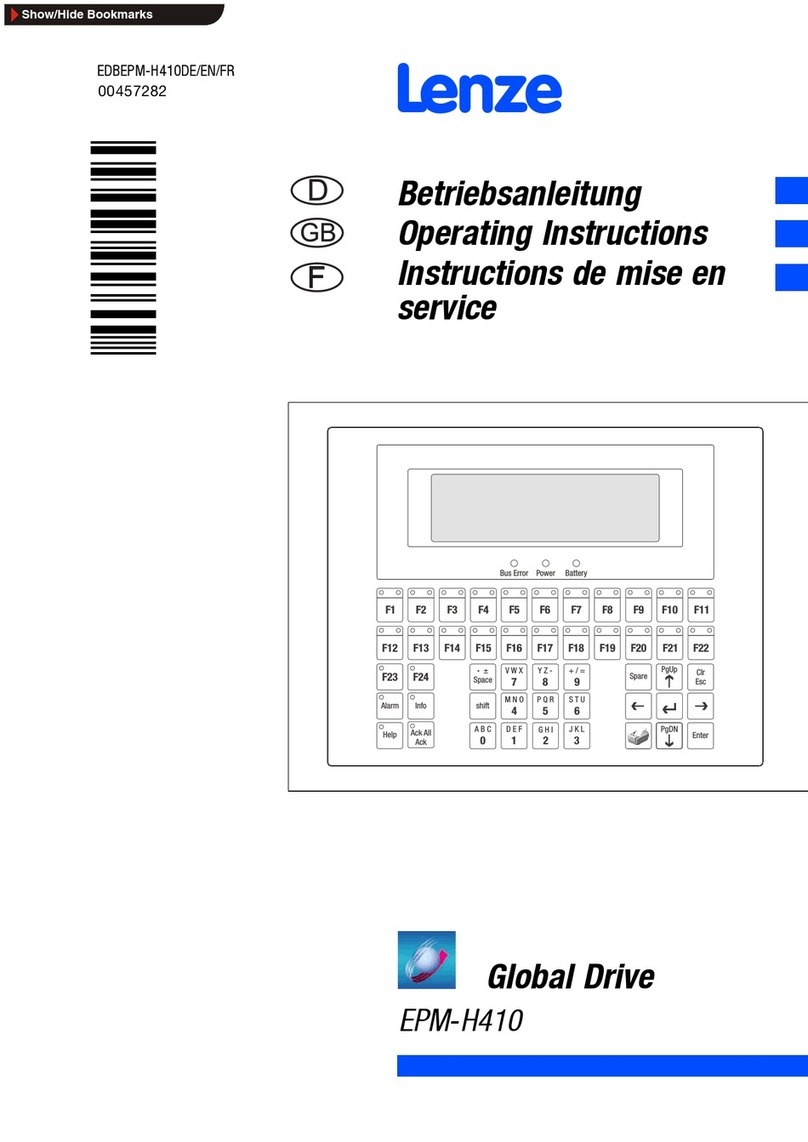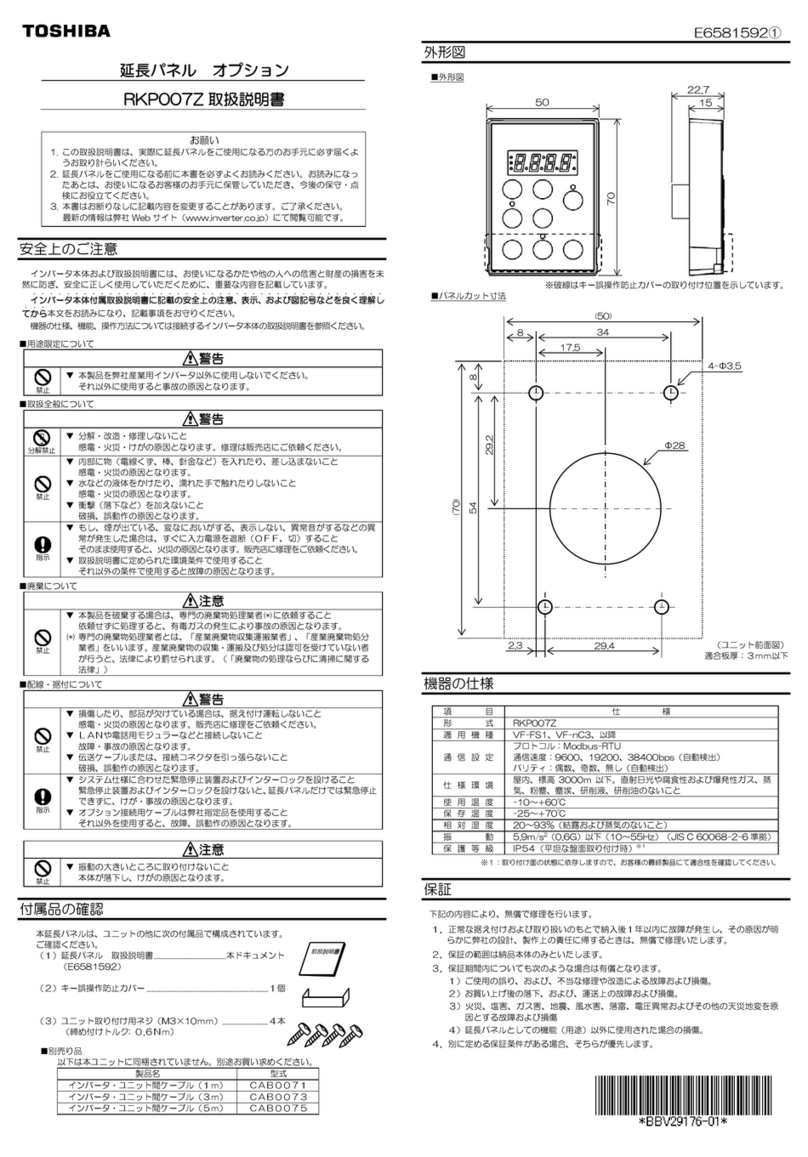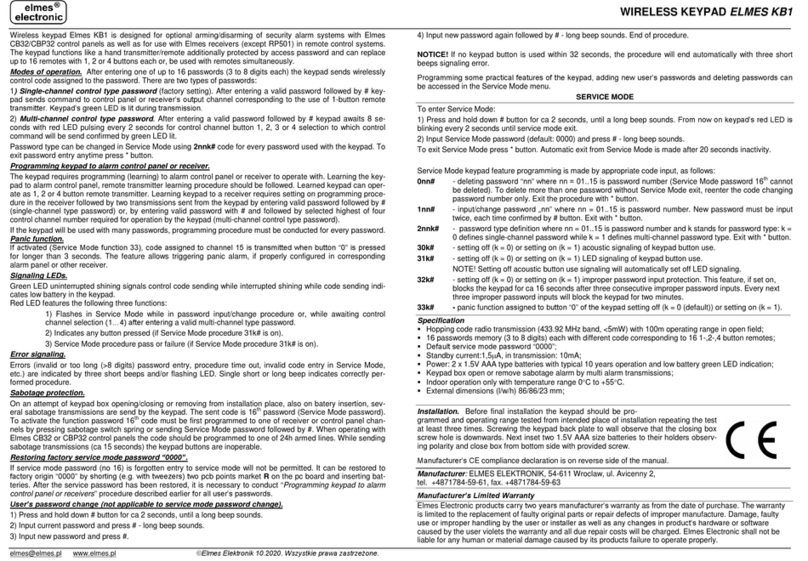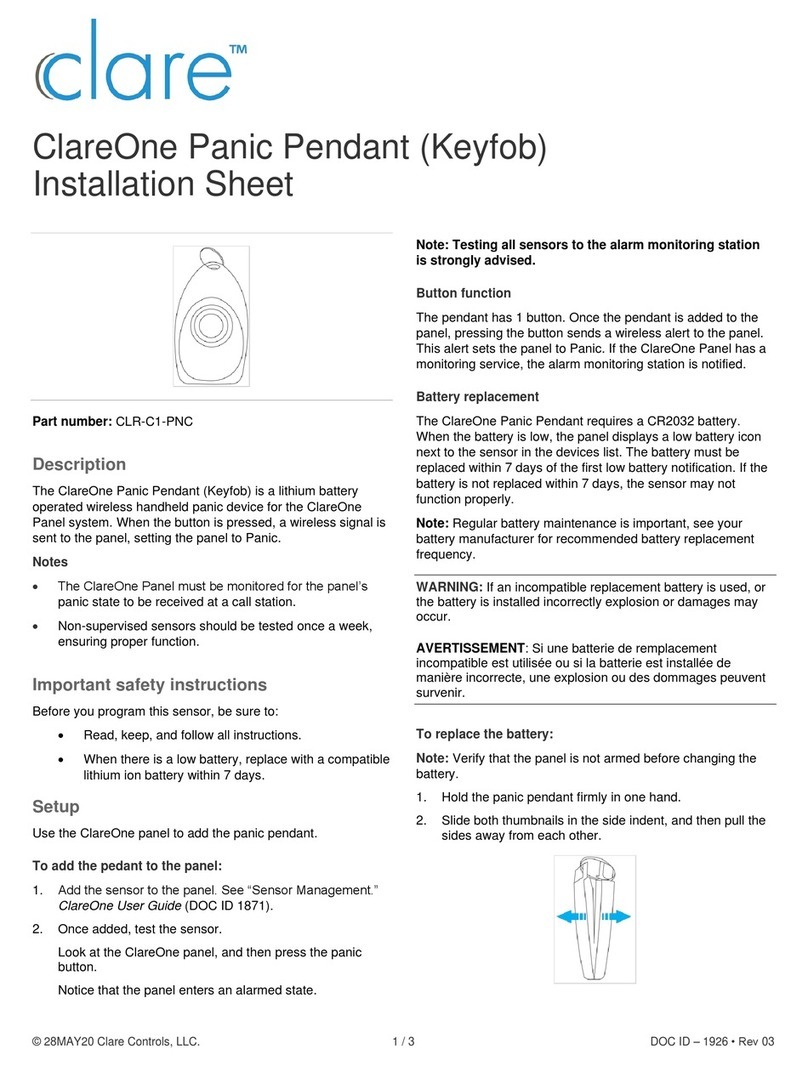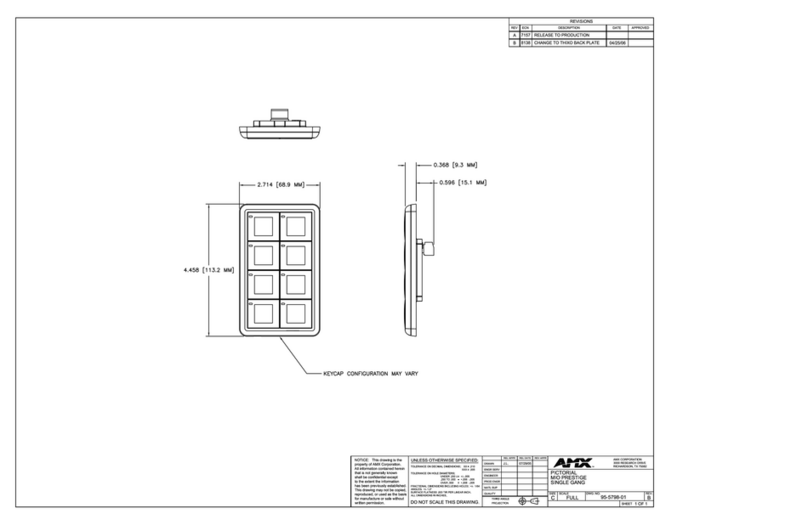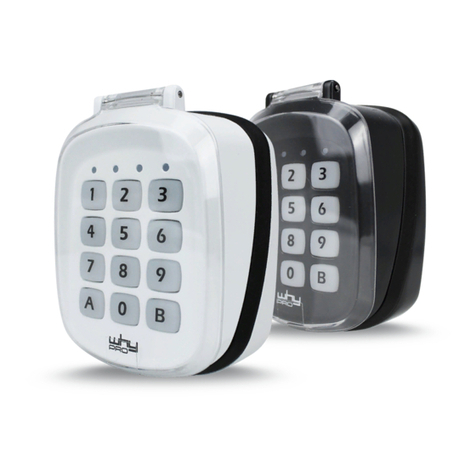
Introduction ...................................................... 3
Features ........................................................... 3
Specifications .................................................... 4
Installation ........................................................ 5
Precautions ....................................................... 5
Harness Connections........................................... 6
LED Indicators ................................................... 7
Programming Instructions.................................... 8
Set Keypad Into Programming Mode With the
Installer Code
.......................................................... 8
Direct Access to Programming Mode (DAP Code) ........... 8
Refresh Code...................................................... 8
Default Keypad Value Table .................................... 9
Keypad Programming............................................ 9
Programming Mode Using Factory Set Installer Code ... 10
Changing the Installer Code ................................. 10
Record an EM Card to Operate Output 1 .................. 10
Set User PIN to Operate Output 1 .......................... 10
Record an EM Card & User PIN to Operate Output 1 .... 11
Record an EM Card & Common User Code to Operate
Output 1....................................................... 11
Close the Programming Mode ................................ 11
Operation........................................................ 12
Unlock Door With an EM Card ........................... 12
Unlock Door With a User PIN ............................ 12
Unlock Door With an EM Card & User PIN ........... 12
Unlock Door With an EM Card & Common
User Code .................................................. 12
Feature Programming ....................................... 12
Programming Criteria for Codes ............................. 12
Installer Code (Location 01) .................................. 14
Common User Code (Location 03, 04)...................... 14
Record/Delete PINs or Cards................................. 14
Visitor Codes (Location 40)................................... 16
Set a One-Time Visitor Code ................................ 17
Set a Time Limit Visitor Code ............................... 17
Delete a Visitor Code ......................................... 18
Clear All Visitor Codes ........................................ 18
Configure Output 1/Output 2 Modes (Location 51,52)... 18
Personal Safety and Keypad Lockout (Location 60)........ 19
User PIN Entry Mode (Location 70) ......................... 19
TABLE OF CONTENTS ALARM CONTOLS CORPORATION PRODUCT LINE
U.L. LISTED MAGNETIC LOCKS
MAGNETIC LOCK MOUNTING BRACKETS
MAGNETIC LOCK DRESS-UP COVERS
MAGNETIC LOCK DRILL JIGS
SELF-CONTAINED DIGITAL KEYPADS
U.L LISTED REQUEST TO EXIT STATIONS
EXPLOSION-PROOF REQUEST TO EXIT STATIONS
MORTISE CYLINDER STATIONS
VANDAL RESISTANT REQUEST TO EXIT STATIONS
REQUEST TO EXIT STATIONS WITH BUILT-IN TIME DELAY
RELAYS AND RELAY BASES
TIMEDELAY MODULES
AUDIBLE INDICATORS
DELAYED EGRESS STATIONS
CONTROL PANELS
EMERGENCY DOOR RELEASES
PUSH PLATES
ZONE ANNUNCIATORS
GRAPHIC ANNUNCIATORS
CUSTOM PLATES
LIFE TIME PRODUCT WARRANTY
**
**
Set Keypad Into Programming Mode With The Installer Code
Important Note:
DO NOT TURN OFF POWER WHEN IN PROGRAMMING MODE
as it may cause data loss or errors in programmed
features.
The keypad beeps continuously for approximately one
minute after power up.
Wait for the beeping to stop before entering in the
Installer Code to access Programming Mode.
Factory set installer code is 0 0 0 0 . For
security purposes, it is advisable to program a new
Installer Code.
2 beeps confirm a valid Installer Code. The Yellow LED
is constantly on while in programming mode.
Direct Access To Programming Mode With The “DAP” Code
In the case of a lost Installer Code it is still possible to
access the programming mode using the Direct Access
to Programming (DAP) code.
1. Switch OFF power for 1 minute.
2. Switch ON power. The keypad isin power-up mode
for approximately 1 minute and there is a
continuous beep.
3. Create a momentary closure between the Brown
and Light Blue wire to enable DAP function (This
must be done while in power-up mode).
4. Key in 8 0 8 0 . The existing Installer Code is
erased and the power-up tone stops. The keypad is
now in Programming Mode and is ready for the
entry of a new Installer Code.
Refresh Code
The keypad can be refreshed to the factory defaults.
Enter the code 9 9 9 9 # to refresh the keypad. All
previously entered data will be erased except for the
Installer Code.
PROGRAMMING INSTRUCTIONS
Operation Modes (Location 94)
LOCATION MODE SUBMIT
94 0 #
MODE -
0 = Stand Alone Mode (default). The keypad operates
with complete functionality.
APPLICATION EXAMPLE
Note:
Connect the 1N4004 as close as possible to the lock
to absorb back EMF and prevent damage to the
keypad. The 1N4004 is not required if the electric
lock is AC operated.
To avoid Electro-Static-Discharge (ESD) from
interfering with the operation of the keypad, always
ground the (-) terminal of the keypad to earth
ground.
EG IN N/O
(–)GND
7 LIGHT BLUE
WIRE HARNESS
1 GRAY
N/O TAMPER
OUTPUT RELAY 2
12 V
GND
–
OUTPUT RELAY
N/O FOR FAIL-SECURE
N/C FOR FAIL-SAFE
MAGNETIC LOCK
ELECTRIC STRIKE
2 PINK
3 PURPLE
4 ORANGE
POWER
TO
KEYPAD
5 RED
6 BLACK
N/O
N/O
N/O
N/C
EGRESS
BUTTON
1N4004
DIODE ADDITIONAL
EGRESS
BUTTONS
CAN BE WIRED
IN PARALLEL
CATHODE
8 BROWN
9 WHITE DATA I/O
10 YELLOW
11 GREEN
12 BLUE
N/C
COM
OUTPUT
RELAY 1
N/O
